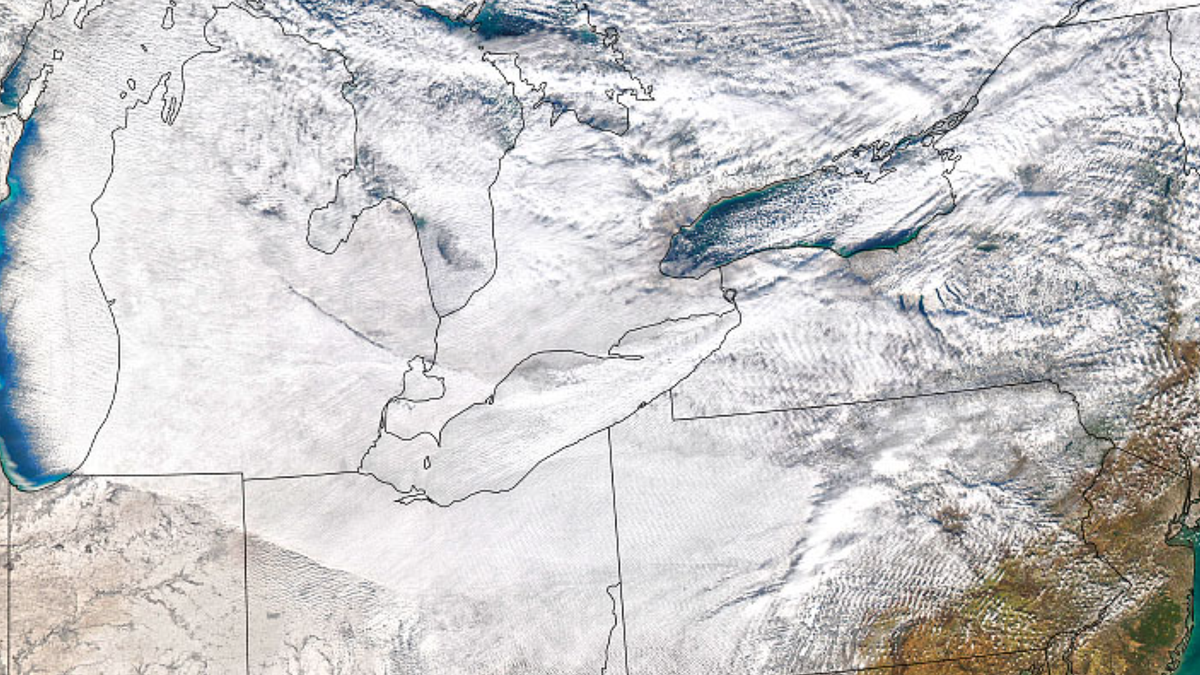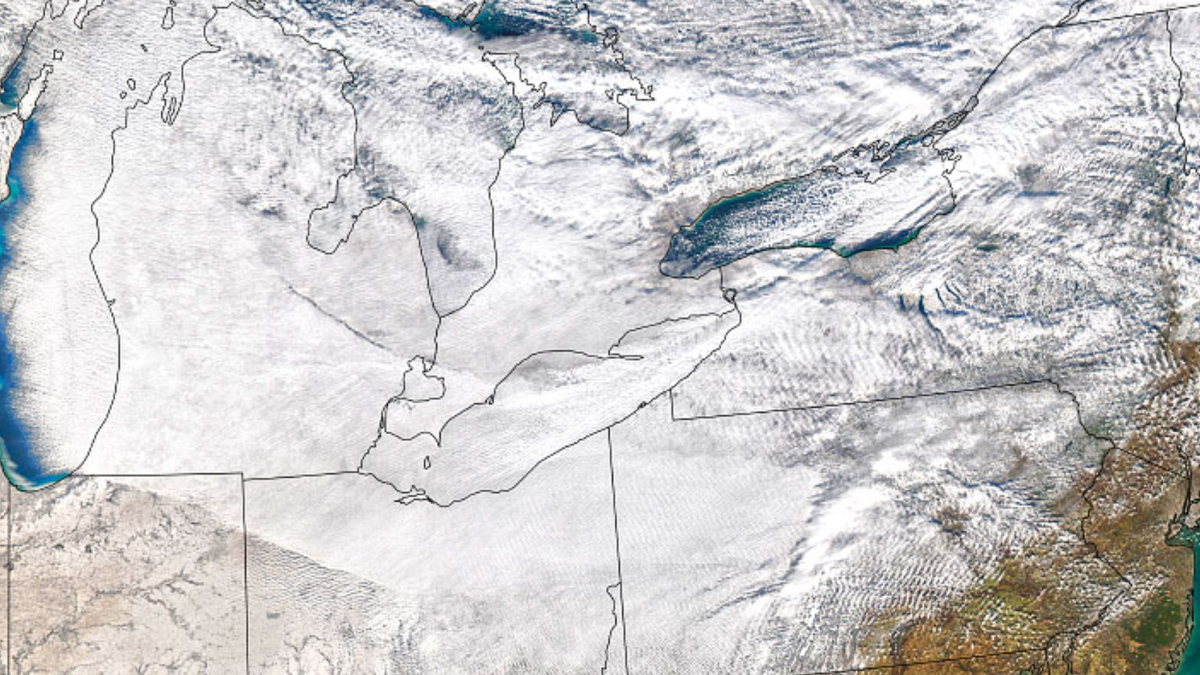
A “bomb cyclone” had widespread effect across the United States and Canada.
Fresh satellite imagery shows snow and clouds blanketing the northeastern U.S. states along with Canada’s province of Ontario. The treacherous conditions on the ground Saturday (Dec. 24) and Sunday (Dec. 25) included blizzards, thick snow and freezing rain, posing a threat to travelers during the peak holiday season.
“As winds howled and snow piled up from what some forecasters called a ‘once-in-a-generation’ storm (opens in new tab), so did the traffic accidents, power outages, and transportation woes,” NASA officials wrote in a statement (opens in new tab) about the imagery, obtained with the agency’s Aqua satellite.
Gusts of wind were recorded as high as 79 mph (127 kph) in Lackawanna, New York, just south of the city of Buffalo. Several other states saw winds blowing at 50 mph (80 km/h), according to National Weather Service statistics quoted by NASA.
Related: ‘Bomb cyclone’ hits eastern US as satellites watch (video)
This false-color version of the image uses a combination of visible and shortwave infrared light to distinguish clouds (white) from snow and ice (blue). pic.twitter.com/370V5yMgIlDecember 27, 2022
A “bomb cyclone” refers to a sudden drop in pressure of at least 24 millibars in 24 hours. Combined with blizzard conditions, some communities alongside the Great Lakes saw incredible amounts of snow.
Communities east of Lake Ontario and Lake Erie, particularly the Buffalo region, saw a storm surge of more than 50 inches (127 cm), NASA officials noted. Other regions saw less snow reach the ground, however, peaking at only about 5 inches (13 cm).
Aqua obtained the imagery using its Moderate Resolution Imaging Spectroradiometer (MODIS). The image leading this article is in natural color, while the Twitter embed focuses on visible and shortwave infrared light to better see the differences between clouds (white) from snow and ice (blue).
Satellites are a key tool in weather forecasting and also in disaster response, where relevant. NASA and the National Oceanic and Atmospheric Administration (NOAA) have a large fleet gazing at the planet, and have pledged to launch more in the 2020s to refresh some of the older ones. Aqua, for example, launched in 2002.
Elizabeth Howell is the co-author of “Why Am I Taller (opens in new tab)?” (ECW Press, 2022; with Canadian astronaut Dave Williams), a book about space medicine. Follow her on Twitter @howellspace (opens in new tab). Follow us on Twitter @Spacedotcom (opens in new tab) or Facebook (opens in new tab).



